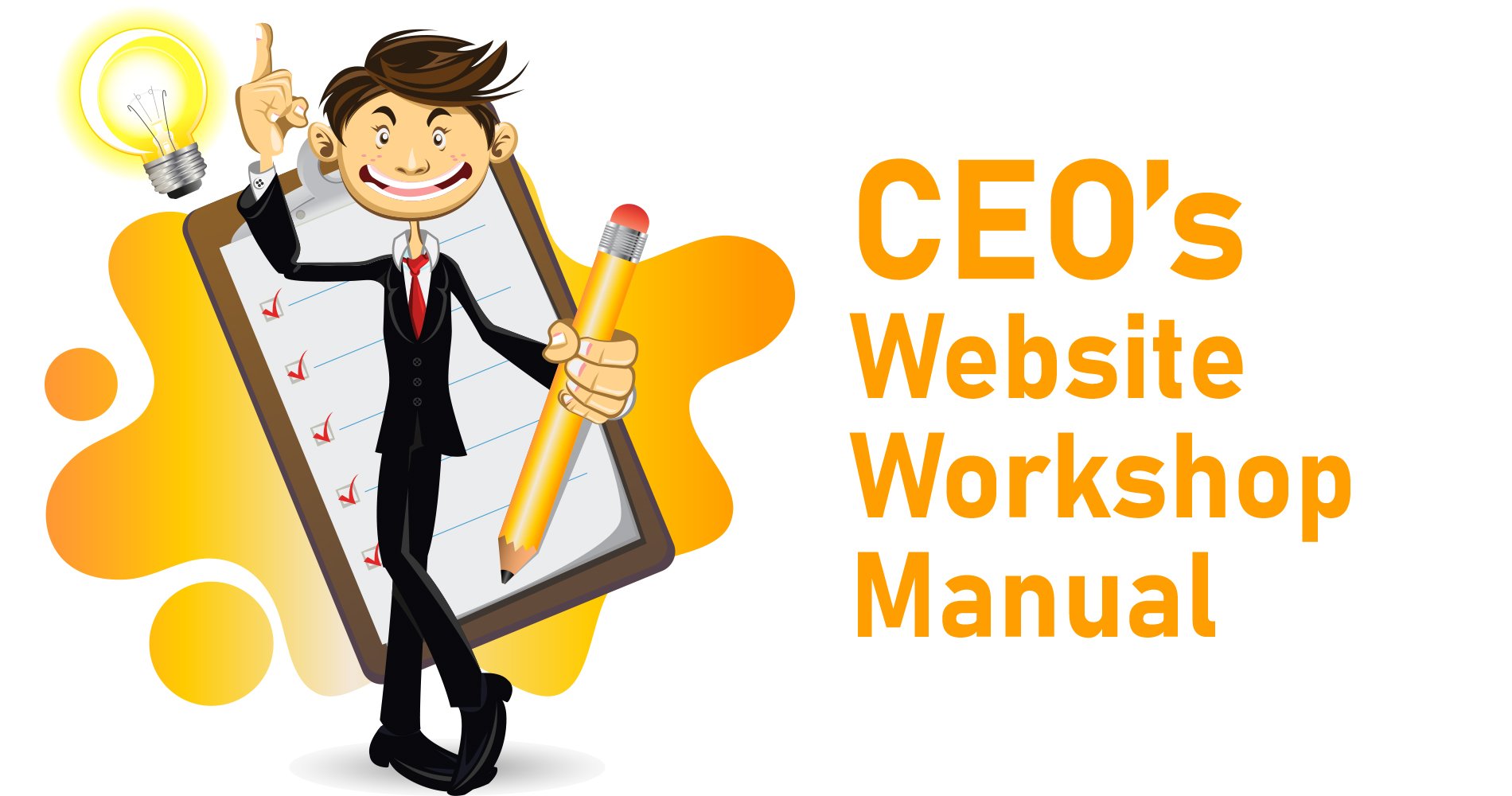Finding a balance between online and offline marketing can be tricky. Changing consumer habits mean that businesses need to adapt quickly or face extinction but making too many changes too often risks alienating customers who may feel you are trying to push them towards a way of doing things they don't want to do. To increase the effectiveness of your marketing without scaring away your customers, it is vital to master the art of 'calculated change.' One way that you can implement this strategy is by consistently updating and redesigning your website to make sure that it is as customer friendly as possible. To help you in this process of improvement, we've come up with some simple ways that you can improve your website so that it continues to meet the needs of both consumers and business owners going forward!
Of course, every website is unique and there's no one-size-fits-all method to improving your website. However, these tips can help you identify the aspects of your website that need the most work and generate ideas on how to improve them. So, without further ado, here are 10 ways to radically improve your website’s user experience!
1. Emphasise white space
There are a lot of different opinions on white space. Many large companies will tell you that they don't like using it in their websites because they feel that the lack of content looks messy and unprofessional, however, this is not always the case. If a user feels lost and disoriented when looking at your website, then perhaps it's time to start thinking about how you can revamp it with more consistent use of white space. Of course, there is no such thing as an all-encompassing rule for white-space usage, so make sure you know what purpose, it's serving your site and brand, and why one might want to be all about those whites after you give these tips a thumbs up or down!
According to popular search engine optimisation company Crazy Egg, white space around text and titles increases user attention by 20%. White space can also make your website feel fresh, open, and modern and if your branding is consistent with these then it can help you communicate that feeling to the user. A downside of white space to keep in mind is that it does indeed take up space.
If you have a lot of content above the fold (the stuff that is immediately visible without scrolling), having too much white space might be replacing some valuable information. The key is to find the balance between what's most important to communicate at the top and surround it with some space to highlight the image and/or text.
2. Boost your page speed
While web browsing, anything longer than 10 seconds can cause you to have a negative experience. With the rise of mobile devices, people tend to do things like look for directions or check out a restaurant while they are on the go or watch TV on their laptop. They don't want to wait. When they are watching TV and they cannot find their remote control, they want the on-screen content to load as fast as possible so that they can turn off the device in the fastest way possible. While visiting different parts of the world, internet users expect immediate results for whatever information they are searching for online.
When they don’t get it, they leave and never come back! If your website loads slowly, users can become frustrated when they encounter unexpected long load times.
In simpler words - slow load times could mean that you are losing out on a lot of business if you don't get it fixed fast. This can lead to loss of money and clients as they will simply bounce off your website with no intent to come back. A recent report by Section.io confirmed that an extra five seconds of page load time resulted in over a 20% increase in website bounce rate!
Different factors can affect the total load time of a website, and it's up to you as a webmaster to identify them one by one and solve them accordingly. Google offers a free service on its search engine platform called Page Speed Score, which can evaluate your page speed concerning mobile connectivity or when it's loading on a desktop computer. It will also offer some suggestions for improvement.
3. Create a compelling call to action
Hey, so on your website you are using visual cues to have your users understand what is important and you trust that your website users will be able to find exactly what they need. Good choice! But if you've been slack with the button design, I'd like to point out that calls to action (CTAs) are very effective because when used correctly, action words are strong verbal formulas that create a sense of urgency in the mind of the reader.
In some cases, like for the Laura Ashley website, just changing the colour can raise click-through rates. It's proven that different colours evoke different emotions in people so make sure you choose wisely depending on your goal as a company. And use action words! They're effective because they're brief cognitive commands designed to encourage prompt or immediate responses.
A second thing to consider when it comes down to buttons is the words you use for them. The words should include a verb or an action word that excites the user to do something. Choosing the right words or psychological triggers is highly determined by the level of emotional identification that word prompts. No emotional connection means no action. So, make your words bold, time-sensitive, and action-oriented like "Sign up now" or "Start my next lesson."
4. Differentiate hyperlinks
What makes an effective hyperlink? Having a link that people immediately identify as a link. Although underlined text links seem to be the most obvious option, they are not always the best choice. Consider using the same colour text and background colour combination for your hyperlinks as you would use for headings or other textual cues in your site's design.
This is probably because earlier on in HTML standards (which preceded CSS) there was no easy way to differentiate paragraphs or other blocks of materials from hyperlinks – so it made sense to do so with headers or other visual attributes and we have just stuck with it since then!
Finally, if you can make your community blog post very long, consider breaking up large chunks of text with regular paragraph breaks before introducing a new learned block of information and ending off with a longer hyperlink title. This helps users see where the information ends and where a link begins without several mouse clicks!
5. Include bullet points to highlight key information
One of the best ways to present an informative infographic that is geared towards helping your users decide what to do is by creatively utilising bullet points. Utilising bullet points adds to the potency of information in an easily digestible format which will give you a competitive advantage in regard to being able to persuade potential customers who have questions about your business.
By taking the most important details and presenting them quickly, while also offering support graphics, you are enabling potential customers to get all the information they need within a short amount of time, which leaves you more time for effective sales techniques such as up-selling or cross-selling.
With so many interesting images out there, you can also get creative with your bullets and put them into a sentence or two with some fun icons you'll find online. Why do this? Because as you'll see when we talk about white space below, it forces you to isolate the most important points you're trying to make without getting caught up in terminology or specifics.
6. Include images
Modern internet users are becoming savvier with regards to which companies make them feel comfortable and like the company does care about their business. During their first encounter with a company website, for example, they can quickly spot elements that seem highly unprofessional such as generic stock photography. Using stock photography may have been necessary for the past when digital cameras were expensive and not standard equipment among customers, but it is no longer necessary today. In fact, doing so can lead to a negative response from web visitors as they may think of your site as generic, and fake compared to competitors who present real images of employees or products. Stock imagery is meant for artistic purposes - not for use on important business websites.
In the end, there's no other way to convey your brand, services, and products as uniquely yours than by showing actual images. Stock images may be easy to mix and match but that is less personalised than using your photos. These will let you connect with your potential customers on an even more personal level by conveying what matters most for the services or products related to the photographs. Embrace your inner photographer and use this time in planning ahead for your web content to place relevant images - but make sure they are original!
7. Provide clear and well-written headings
Headings and captions reveal the story behind your product/service. Your headline attracts searchers and presents you in the best light for them to click on, leading them to your landing page where they learn more about who you are and what you can do for their business. Not only does a catchy headline or pull quote help increase interest in your lead gen form, but it also helps prospective customers understand the narrative of your brand – which can go a long way towards converting them into paying customers, beautifying testimonials, improving SEO results, and ranking higher on SERPs.
8. Create consistent pages for your website
Make sure that everything you create on your website matches in some way. It is important to cohesively place the same background colours, font colours, button styles, etc. throughout your entire website while following the colour scheme that your brand has set. The better job you do at this, the more cohesive and well thought out your brand will appear to visitors of your site.
If any element of a page changes drastically from one page to another (such as changing all elements on the left side of a page but leaving the right side exactly as it was) then there will be inconsistencies when the user navigates from one page to another. This can confuse and frustrate users who end up wanting to abandon your site for others because they don't know if they are still on yours or not.
9. Keep an eye on your 404s
A missing page can be the difference between the success and failure of a website. When a user visits your site and spots an error, they are less likely to trust that site anymore.
In terms of search engines, a page that is "not found" (404) doesn’t affect your website's ranking. However, it affects the user experience and people who do come across 404 errors are likely to be frustrated and less likely to stick around your site. If they want to find a solution or fill in the gap, they may go elsewhere - like to another website instead, which could be even quicker than you are!
There are a few ways to check for 404s. The most popular and easiest is using Google Webmaster tools on your website (if you don't have it, get it!) and checking crawl errors. Alternatively, you can use this for comparison-purposes-only tool or if you'd like something more comprehensive and user friendly -, otherwise as noted above, also be sure that when users land on 404s they are given additional information about where to go from there!
10. Optimise your website for mobile devices
Mobile technologies have advanced in a very short amount of time, and they are now a vital part of our daily lives. Websites are also evolving in this way to help meet the needs of modern users. It's imperative that your website is mobile-friendly, easy to navigate, and doesn't rely on Flash or other outdated technologies. Recent changes in Google's algorithms now penalise sites that aren't optimised for mobile devices, making the need for responsiveness even more crucial. This is the single most useful way to improve your website's usability. If you're not sure whether or not your website is mobile, you can use this free tool.




